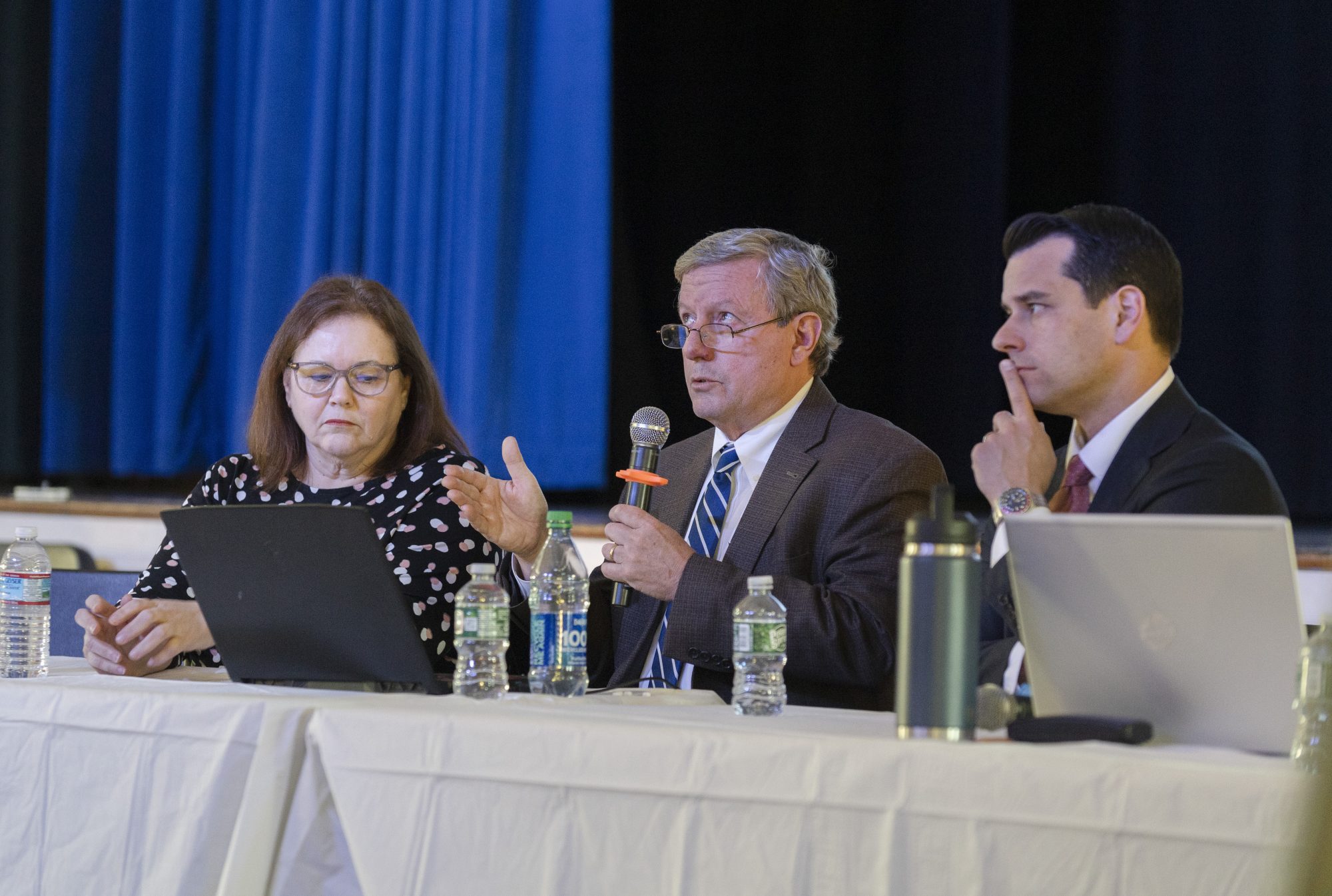LYNN — The Pickering School Building Committee voted unanimously to accept a lot neighboring Sisson Elementary School as the site for a new middle school following a public hearing on the site change Monday night.
Community members voiced their questions and concerns on the costs and neighborhood impacts associated with the change before the committee voted to approve the new site configuration at Sisson.
At a Pickering School Building Committee meeting last month the project’s lead engineer, Raymond Design Associates President Gene Raymond, recommended moving the school construction site from Magnolia Park to the space next to Sisson Elementary School.
At Monday night’s meeting, Raymond listed a variety of costs likely to arise from the committee’s original Magnolia Park plan.
Since Magnolia Park’s bedrock foundation sits more than 160 feet below the ground, Raymond said the process of building a foundation that deep would be like “throwing $20 million in the ground immediately.”
Additionally, the Federal Emergency Management Agency (FEMA) recently amended their flood plain maps to include the entirety of Magnolia Park. To remain FEMA-compliant, the school would have to be built several feet higher than originally planned, further increasing the project’s total cost and delaying its timeline.
Raymond presented a number of options for the potential site next to their estimated cost to the city — from building a bridge from Magnolia Park to the Sisson lot, to working around the construction hurdles at Magnolia Park, which are estimated to cost $195,675,500.
Constructing a five-story building at Sisson, Raymond said, would ultimately be the most cost-effective and least disruptive solution.
“That led us to say ‘Let’s not do anything at Magnolia, maybe we can use it for parking and maintain it as a community play area, and what if we tucked in the building to the right of Sisson,” Raymond said. “Magnolia stays as a play area, and we don’t have to worry about any of the issues down there, or spend any money on deep foundations.”
Raymond added that the committee planned to temporarily use auditorium or cafeteria space from the current Pickering Middle School to replace the four modular classrooms that would be removed to make room for the new school.
When the panel turned to accept questions from the audience, Conomo Avenue resident Jefell Campos said he worked as a health and safety supervisor, and that he wanted to know how much noise pollution and construction debris the estimated two-year construction period would leave behind.
Project Manager Lynn Stapleton, of LeftField Design, responded that a construction manager would be on site closely monitoring pile-drive operations and any health or safety risks throughout the construction phase.
Tara Osgood, a teacher at Sisson, also asked about noise pollution. She said that since Sisson does not currently have an HVAC system, she keeps her windows open throughout the day to cool her classroom, and worries that construction noises would impede her students’ ability to learn.
Raymond responded that he believed the city was working to install an HVAC system at Sisson, and that although the process might inevitably be disruptive, the construction will not directly face any windows.
“I’m not going to say it’s not going to be disruptive. There might be some periods where there’s some banging,” Raymond said. “But no matter where we build on this site, you would have some sort of disruption. The best we can do is manage it.”
Persida Chez, a teacher at Pickering, asked how much money the state would contribute to the new school construction. Mayor Jared Nicholson responded that while the Massachusetts School Building Authority is likely to reimburse 42 percent of the city’s costs, the reimbursement rate could theoretically increase to a maximum of 80 percent.
Nicholson said the reimbursement rate went down because of increased construction costs, and that the committee recently drafted a letter to the state treasurer’s office to try to secure financial assistance with the project.
“This is a huge issue for us as a community, but the effective reimbursement rate is at 42 percent,” Nicholson said.

